Camping is an old tradition loved by many. It lets people escape their busy lives and enjoy nature. There are different types of camping for different preferences.
In this article, we’ll talk about all kinds of camping, from basic to luxurious, so everyone can find what they like.
The history of camping goes way back. Early people lived in caves and made simple tools. As time passed, camping got easier with things like tents and campfires.
In the USA, camping has a long history, too. Native Americans and pioneers camped a lot. In the late 1800s and early 1900s, more people started camping because of clubs and cars.
After World War II, it became even more famous for families. Today, camping is still a favourite pastime, with options for everyone, from traditional camping to fancy R.V. trips, all while taking care of the environment.
Before exploring the different types and styles of camping, let’s look over the benefits of camping.
Benefits of Camping
Camping offers a wide range of benefits, both physical and mental, making it a popular outdoor activity for people of all ages. Some of the critical benefits of camping include:
Connect with Natural Environment: Camping allows you to immerse yourself in natural environments, fostering a deeper connection with the outdoors. Spending time in nature has been shown to reduce stress, improve mood, and boost overall well-being.
Physical Activity: Camping often involves physical activities such as hiking, swimming, and outdoor games, promoting physical fitness and an active lifestyle.
Chance to Relax from Busy Urban Life: Camping provides a break from the digital world, allowing you to disconnect from screens and enjoy quality time with friends and family. It’s a chance to unwind, relax, and be present in the moment.
Social Bonding: Camping encourages social interactions and strengthens relationships. It’s an opportunity to create lasting memories with loved ones around a campfire or while exploring the wilderness together.
Skill Development: Camping teaches essential outdoor skills such as fire-building, navigation, and campsite management. It promotes self-reliance and problem-solving abilities.
Stress Reduction: Being in natural surroundings and away from the pressures of everyday life can reduce stress levels and promote mental relaxation.
Adventure and Exploration: Camping offers the thrill of adventure and exploration, whether you’re discovering new trails, exploring national parks, or seeking out remote wilderness areas.
Quality Sleep: Camping in natural settings often leads to better sleep due to the absence of artificial light and noise pollution. It can help reset your internal clock and improve sleep quality.
Personal Growth: Overcoming challenges in the wilderness can boost confidence and resilience, leading to personal growth and self-discovery.
Different Types of Camping
In the following, I explained the different types of camping, and you can choose your favourite one.
1. Tent Camping
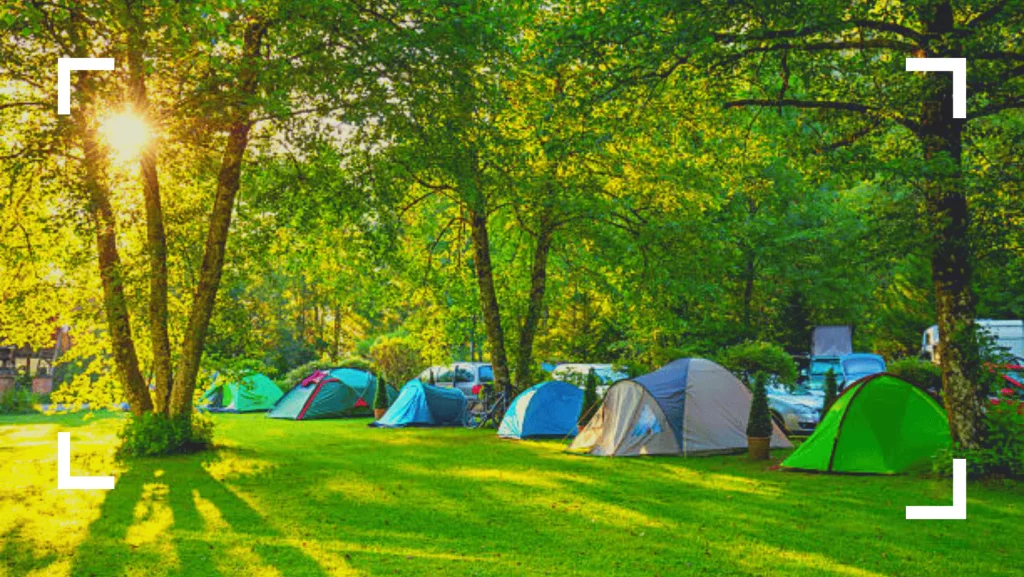
Tent camping is a classic and beloved form of outdoor recreation, where individuals or groups set up temporary shelters, usually made of fabric, in natural settings. This type of camping allows people to immerse themselves in nature while enjoying the simplicity of life outdoors.
According to the Outdoor Industry Association, over 40 million Americans went camping in 2020. Tent camping is one of the most affordable ways to enjoy the outdoors, with a basic tent costing as little as $30 to $100.
Campers who enjoy tent camping often cite the peace and tranquillity of sleeping under the stars and the ability to be closer to nature as major attractions.
As the renowned journalist John Muir once said, “Climb the mountains and get their good tidings. Nature’s peace will flow into you as sunshine flows into trees.” This sentiment captures the essence of tent camping, where individuals can disconnect from the modern world and find solace in the beauty and serenity of the natural environment.
Compared to other forms of accommodation, tent camping is often much more affordable. This makes it an excellent option for budget travellers.
You have the freedom to camp in various locations, from organized campgrounds to more remote, wild areas (where allowed). This flexibility allows for a variety of experiences.
However, Tent camping is heavily dependent on the weather. Bad weather can quickly turn a camping trip into a challenging experience. Depending on the camping location, there might be limited access to facilities such as toilets, showers, and clean water. Being in remote areas can raise safety concerns, especially in case of medical emergencies or getting lost.
Tent camping encourages a more straightforward way of living, even if temporarily. It’s an opportunity to disconnect from modern conveniences and enjoy a more minimalist lifestyle.
2. Backpacking and Hiking Camping
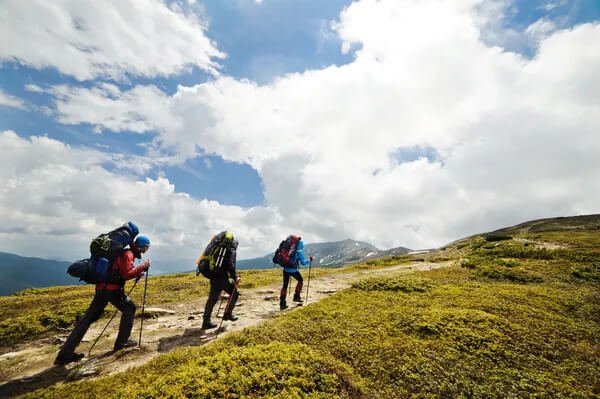
Backpacking and hiking are adventurous outdoor activities that allow individuals to explore the beauty of nature, often on foot. While they share similarities, they differ in their scope and purpose.
Hiking involves walking on trails or paths, typically for shorter distances and durations. It can be a leisurely day hike or a more challenging trek over several days, depending on the trail and the hiker’s preferences.
Backpacking, on the other hand, is an extended form of hiking that often involves carrying camping gear and supplies in a backpack. Backpackers venture into remote areas, spending multiple days on the trail and camping overnight at designated campsites or in the wilderness.
In 2022, more than fifty four percent Americans participated in hiking activities, according to the Outdoor Industry Association. The Appalachian Trail, one of the most famous long-distance hiking trails in the world, stretches over 2,190 miles from Georgia to Maine.
Backpacking gear has evolved significantly, with lightweight equipment designed to make long-distance treks more comfortable.
As John Muir once eloquently stated, “In every walk with nature, one receives far more than he seeks.” These activities not only offer physical challenges but also provide an opportunity to connect with nature, find inner peace, and gain a deeper appreciation for the world around us.
Carrying everything you need on your back encourages minimalism and self-reliance. This can be empowering and build confidence in your outdoor skills. However, the physical demand of carrying all your gear, often over rugged terrain, can be exhausting and may lead to injuries if you are not adequately prepared.
Backpacking often involves navigating through remote areas, which can be challenging and potentially risky, especially in areas with poor or no trails.
As an experienced camper, I suggest that if you are a newcomer, then you should thoroughly prepare yourself and your fitness to overcome all challenges. Always give respect to nature, and for the beginner, you should choose the less demanding trails.
3. Car Camping
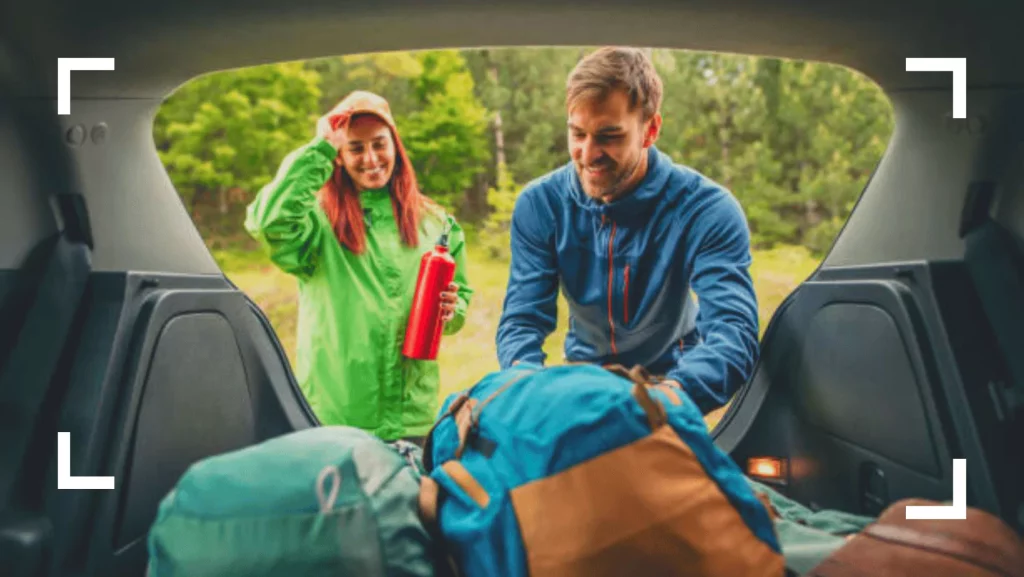
Car camping is a popular form of outdoor adventure that combines the joys of camping with the convenience of bringing your vehicle to the campsite. Unlike backpacking or hiking, car camping allows individuals to access campsites with ease and bring along more amenities and gear.
According to the Outdoor Industry Association, nearly 25 million Americans participated in car camping in 2020. Car camping is a family-friendly activity, making it accessible to people of all ages.
Campers can transport larger tents, comfortable sleeping arrangements, cooking equipment, and even coolers filled with fresh food, making it a comfortable choice for those who enjoy a bit of luxury while camping.
Car camping, with its blend of convenience and access to the outdoors, offers an opportunity for individuals and families to experience the tranquillity of nature without sacrificing comfort, making it an ideal way to introduce newcomers to the joys of camping.
Being close to your vehicle can provide a sense of security. You have a means to leave quickly in case of emergency and a secure place to store valuables. Car campsites often have a community feel, offering opportunities to socialize with fellow campers.
Car campsites, especially in popular areas, can be crowded and noisy, which might detract from the peace and solitude some seek in camping. With the campsites often close to each other, privacy can be an issue.
Car camping, particularly in popular areas, can have a significant environmental impact due to vehicle emissions, habitat disturbance, and higher waste generation.
I recommend new campers research campgrounds, make reservations if necessary, and be mindful of Leave No Trace principles. Also, start with shorter trips to familiarize themselves with the joys and challenges of car camping.
4. R.V./Van Camping

R.V. (Recreational Vehicle) and van camping are increasingly popular ways to explore the great outdoors while enjoying the comforts of a mobile home. These modes of camping provide a unique blend of adventure and convenience, allowing travellers to take their homes with them on the road.
The R.V. Industry Association reported that over 11 million households in the U.S. owned an R.V. in 2020.
Van life has gained popularity, with social media platforms showcasing the experiences of van dwellers and the creative ways they convert vans into cosy living spaces.
RVs and vans come equipped with various amenities, such as kitchens, bathrooms, and sleeping quarters, providing a high level of comfort for extended trips.
R.V. and van camping enable travellers to embark on epic journeys into nature, exploring diverse landscapes while maintaining a comfortable, self-contained base. These forms of camping offer flexibility and freedom, allowing individuals to embrace the open road and venture wherever their spirit of adventure leads them.
RVs and vans provide a sense of security, as they offer a locked and enclosed space, which can be reassuring, especially for solo travellers or those with safety concerns.
Owning or renting an R.V. or camper van can be expensive, not only in terms of the vehicle itself but also maintenance, fuel, and campground fees. R.V.s and larger camper vans may have limited access to specific campsites, especially in more remote or off-road locations. I restrict your camping options.
However, you should make sure that whenever you go for R.V./van camping, you follow eco-friendly camping practices, such as proper waste disposal and minimizing environmental impact. Before camping, research campgrounds and plan your routes carefully, taking into account size restrictions and accessibility.
6. Survival Camping
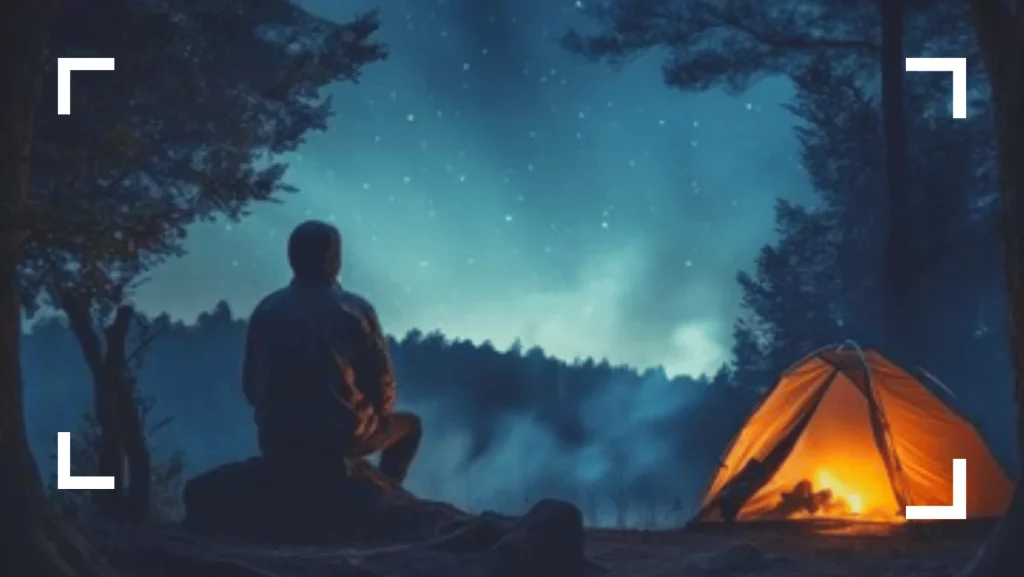
Survival camping, also known as bushcraft or wilderness camping, is a challenging and primitive form of camping that focuses on self-reliance and essential survival skills. Participants engage in this type of camping to test their mettle and learn how to live off the land with minimal equipment.
Survival camping enthusiasts often acquire skills such as fire-making, shelter construction, foraging for food, and navigation using minimal tools.
Various survival television shows and courses have increased interest in this form of camping.
While it may not be as popular as recreational camping, survival camping has a dedicated following of individuals seeking to hone their outdoor survival skills.
Survival camping embodies the spirit of adventure and self-sufficiency, allowing participants to connect deeply with nature and their primal instincts. It emphasizes the importance of knowledge and resourcefulness, offering a unique perspective on outdoor living that harkens back to our ancestors’ way of life.
Generally, it can be more cost-effective as it requires fewer resources and gear. Comfort is significantly reduced, which can impact sleep, nutrition, and overall enjoyment. Without proper knowledge, there’s a risk of negatively impacting the environment, such as by incorrectly foraging or leaving traces.
Without proper knowledge, there’s a risk of negatively impacting the environment, such as by incorrectly foraging or leaving traces. Bring essential gear like a reliable knife, fire-starting tools, a first-aid kit, a water purification method, and an emergency communication device.
Understand the local flora and fauna, weather patterns, and regulations to ensure a safe and legal camping experience. Always recognize your physical and mental limits. Don’t push yourself too hard, especially on your first few trips.
7. Ultralight Camping
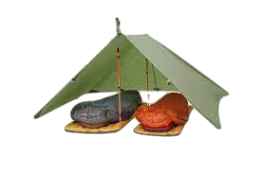
Ultralight camping is a minimalist approach to outdoor adventures, focusing on reducing the weight of gear and equipment to the bare essentials. This form of camping allows enthusiasts to enjoy nature with less physical strain and increased mobility.
Ultralight backpackers aim to carry base pack weights of 10-20 pounds or even less.
The Ultralight movement gained prominence in the 1990s with the publication of books like “The Ultimate Hiker’s Gear Guide” by Andrew Skurka.
Ultralight gear often employs advanced materials and technology to minimize weight without sacrificing durability.
Less weight means you can move faster and cover more distance with less effort. Carrying less weight reduces the strain on your body, making the hike more comfortable and reducing the risk of injury.
Ultralight gear is often designed to be simple and efficient, encouraging a minimalist approach to camping. However, Reducing gear can mean sacrificing comfort, like thinner sleeping pads or smaller shelters. Ultralight gear may not offer the same level of protection against harsh weather conditions.
Before a significant trip, test your gear on shorter trips to ensure it meets your needs, and you know how to use it effectively. Master the art of packing what is necessary. Every item should have a purpose.
Even when cutting weight, don’t compromise on essential safety items like a first-aid kit, navigation tools, and appropriate clothing. Always check weather forecasts and trail conditions before your trip, as ultralight gear may not withstand extreme conditions.
8. Overlanding
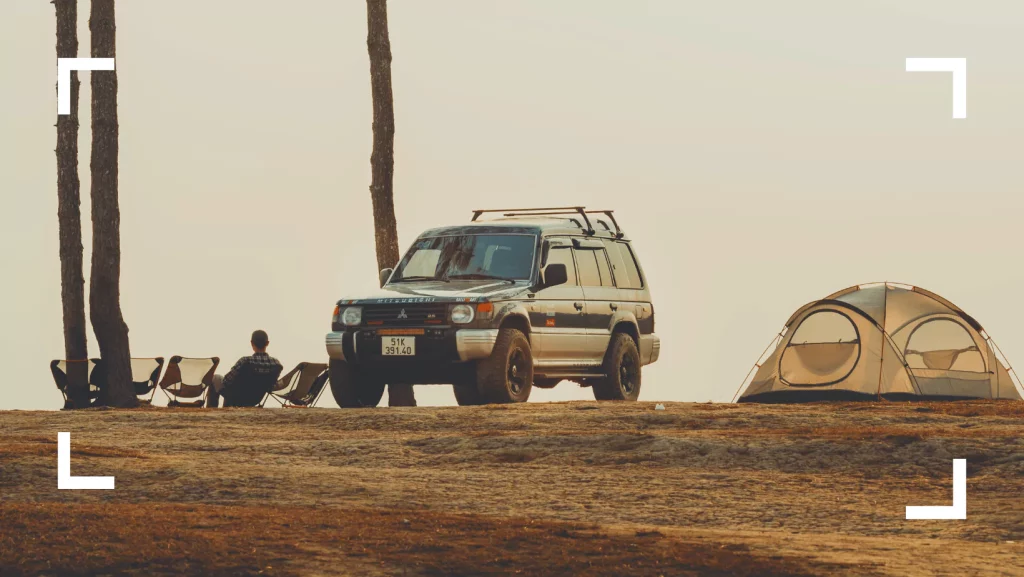
Overlanding camping is a thrilling and self-sustained form of travel that involves journeying long distances across varied terrain, often in off-road vehicles or specially outfitted 4x4s. It’s an immersive way to explore remote and challenging landscapes while carrying all the necessary supplies for extended trips.
Overlanding has gained popularity in recent years, with enthusiasts forming a global community dedicated to this adventurous pursuit.
The Overland Expo, an annual event in the United States, brings together thousands of overlanders to share knowledge and gear.
Overlanding offers opportunities for cultural exchange as travellers encounter diverse people and places along their routes.
In the words of Aldo Leopold, “There are some who can live without wild things and some who cannot.” Overlanding camping embodies the spirit of those who seek the wild, pushing boundaries to experience the beauty of remote places and the thrill of self-reliance.
It’s a mode of travel that celebrates the journey as much as the destination, fostering a deep connection with the natural world and the cultures encountered along the way.
Overlanding can be expensive due to the cost of a capable vehicle, modifications, maintenance, and fuel. Remote travel increases risks such as getting stranded, facing harsh weather conditions, or encountering wildlife.
Always:
- Select a vehicle that fits your needs and is capable of handling the terrain you plan to encounter.
- Consider factors like 4WD capability, reliability, and cargo space.
- Always inform someone of your plans and expected return.
- Carry emergency communication devices and a well-stocked first-aid kit.
9. Glamping

Glamping, a fusion of “glamorous” and “camping,” offers a luxurious and comfortable way to experience the beauty of nature. It provides all the amenities and comforts of a high-end resort while immersing guests in stunning outdoor environments.
According to the American Glamping Association, the glamping industry has experienced significant growth, with a wide range of unique accommodations, from luxury tents to treehouses and yurts.
Glamping destinations can be found worldwide, from remote wilderness areas to picturesque beaches and vineyards.
Glamping attracts a diverse range of travellers, from honeymooners seeking a romantic getaway to families looking for a unique and hassle-free camping experience.
It offers travellers an opportunity to reconnect with nature in opulent surroundings, fostering a deep appreciation for both the natural world and the comfort of modern luxuries.
Glamping can be more expensive than traditional camping due to the luxurious amenities and services provided. Always Research different glamping sites to find one that matches your desired level of comfort, activities, and location.
10. Winter Camping
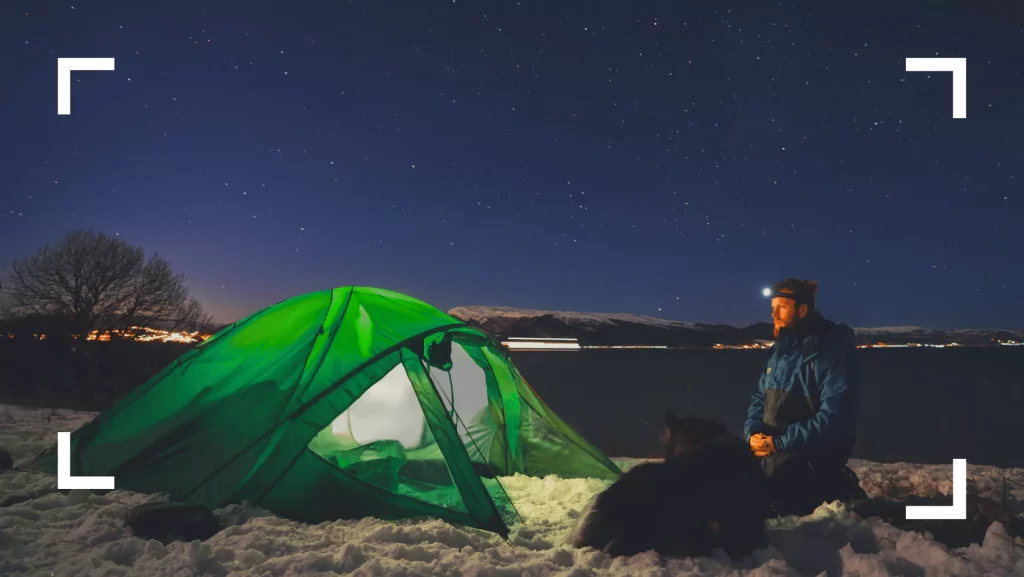
Winter camping is an exhilarating outdoor pursuit that involves camping in cold and snowy conditions, providing a unique opportunity to experience the tranquillity of winter landscapes while challenging one’s outdoor skills and resilience.
According to the Outdoor Industry Association, approximately 11.7 million Americans engaged in camping activities during the winter months in 2020.
Winter camping destinations can be found in various cold-climate regions worldwide, including national parks and wilderness areas.
Specialized gear, such as four-season tents, insulated sleeping bags, and snowshoes, are essential for safe and comfortable winter camping.
In the words of Henry David Thoreau, “Winter is the time for comfort, for good food and warmth, for the touch of a friendly hand and for a talk beside the fire: it is the time for home.”
Winter camping encapsulates the magic of winter, allowing adventurers to find solace in the serene beauty of snow-covered landscapes while forging a deep connection with the season’s unique charms.
The cold weather means fewer bugs and insects, which is a significant advantage for many campers.
Winter weather can be unpredictable and harsh, posing risks such as hypothermia, frostbite, and snowstorms.
Requires specialized gear such as four-season tents, sleeping bags rated for low temperatures, and appropriate clothing, which can be expensive. Shorter days mean less daylight for setting up camp and engaging in activities.
Ensure you have a suitable four-season tent, a sleeping bag rated for low temperatures, insulated sleeping pads, and layered, moisture-wicking clothing. Always check the weather forecast and be aware of avalanche risks if camping in mountainous areas. Your body burns more calories in cold weather, so eat high-energy foods and stay hydrated.
Winter camping offers a unique and rewarding way to experience the outdoors, but it also requires careful preparation and respect for the challenges of the colder environment. With the right gear and skills, it can be an unforgettable adventure.
If you are a winter camping lover then read my guide about Winer Camping for Beginners
11. Hammock Camping

Hammock camping is a form of outdoor recreation that offers a unique and comfortable way to sleep and relax in the great outdoors. Instead of traditional tents and sleeping bags, campers use hammocks as their primary shelter and sleeping apparatus, suspended between trees or other suitable anchors.
Hammock camping has been on the rise, with enthusiasts enjoying the benefits of lightweight and portable setups.
According to the Hammock Forums, a dedicated online community, hammock camping has gained popularity due to its versatility and comfort.
Hammock camping often appeals to backpackers and minimalists, as hammock systems can be lightweight and easy to pack.
In the words of Albert Einstein, “Look deep into nature, and then you will understand everything better.” Hammock camping captures the essence of this sentiment by providing campers with an elevated perspective of the natural world. It allows outdoor enthusiasts to immerse themselves in the beauty of nature while enjoying the comfort and simplicity of hammock-based relaxation and sleeping systems.
Hammock camping is only feasible in areas with sturdy trees appropriately spaced. Hammocks offer less space for storing gear and can be less spacious than tents. Setting up a hammock properly for comfortable and safe sleep requires some practice and skill.
Invest in a quality camping hammock designed for overnight use, ensuring it’s durable and has sufficient weight capacity. Choose healthy, sturdy trees that are the correct distance apart. Avoid dead trees or those with loose bark. Ry sleeping in your hammock overnight in a controlled environment to ensure it suits your sleeping style and comfort needs.
Hammock camping can be a delightful and unique way to enjoy the outdoors. With the proper preparation and respect for nature, it offers a lightweight, comfortable, and environmentally friendly camping experience.
12. Backyard Camping
Backyard camping is a delightful outdoor activity where individuals and families set up camp right in their own backyard or outdoor space. It offers a fun and accessible way to experience the joys of camping without the need to travel far from home.
In recent years, backyard camping has gained popularity as a convenient and budget-friendly way to enjoy the outdoors. It was especially prevalent during the COVID-19 pandemic when travel options were limited.
The National Park Foundation reported that over 80% of Americans live in urban areas, making backyard camping an ideal way for city dwellers to connect with nature.
Families often use backyard camping as a way to introduce young children to camping in a familiar and safe environment.
Backyard camping allows individuals to tap into their imagination and creativity, transforming their own outdoor spaces into a realm of adventure and wonder. It reinforces the idea that nature’s beauty can be found even in our backyards, encouraging a sense of exploration and appreciation for the world just beyond our doorstep.
It Provides a safe, controlled environment, which is especially important for families with young children or first-time campers. Eliminates costs associated with campsite fees, transportation, and other travel expenses.Great opportunity to test new camping gear or practice camping skills before embarking on more adventurous trips.
The scenery and space for activities may be limited compared to traditional camping sites. Urban or suburban backyards may have more noise and light pollution, detracting from the outdoor experience. Less opportunity to meet and interact with other campers or engage in group camping activities.
To enhance the experience, limit the use of smartphones, tablets, and indoor amenities. Backyard camping is an excellent opportunity for family bonding, so involve everyone in activities like setting up the tent, cooking, and planning games.
Backyard camping can be a delightful way to introduce children to camping or to enjoy a low-stress, low-cost outdoor experience. It’s a great way to enjoy the benefits of camping without leaving the comfort of home.
If you want camping in Pakistan then visit Skardu Tour Packages
Final Thoughts
In conclusion, exploring the diverse world of camping offers a multitude of opportunities for outdoor enthusiasts to connect with nature, embark on adventures, and create lasting memories. The various types of camping cater to a wide range of preferences and comfort levels, ensuring that there’s a camping style for everyone.
Whether you’re drawn to the simplicity of tent camping, the mobility of R.V. and van camping, the ruggedness of survival camping, or the luxury of glamping, each type of camping has its unique appeal. From the tranquillity of beach camping to the thrill of motorcycle camping and the convenience of rooftop camping to the physical challenge of backpacking and hiking camping, the options are as diverse as the natural landscapes waiting to be explored.
No matter the type of camping you choose, it’s crucial to embrace responsible outdoor practices, following the golden rule of camping, which is to “Leave No Trace.” By minimizing our impact on the environment, we can ensure that the beauty of these natural settings remains intact for generations to come.
So, whether you’re a novice camper just starting to explore the world of camping or a seasoned outdoor enthusiast looking for your next adventure, the world of types of camping is vast and inviting, ready to provide you with unique and unforgettable experiences in the great outdoors.

